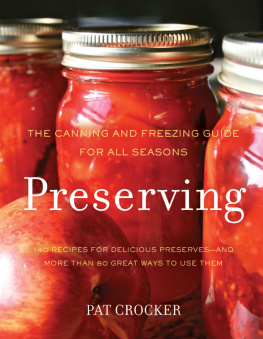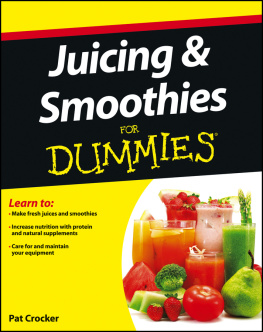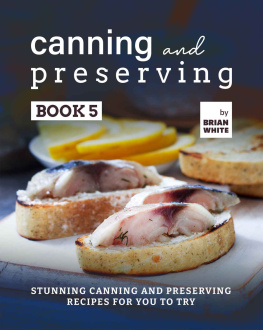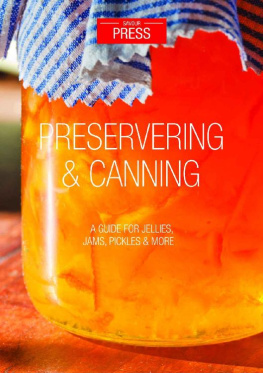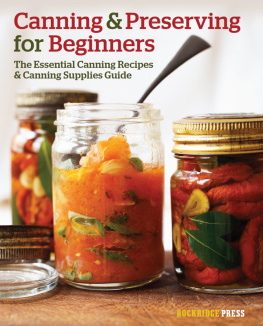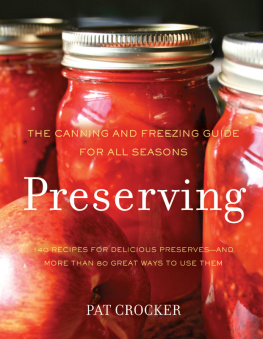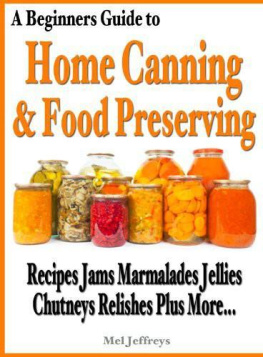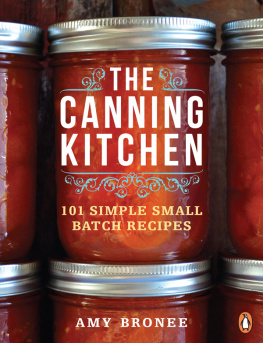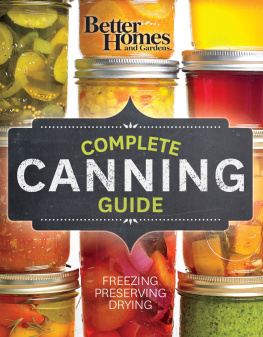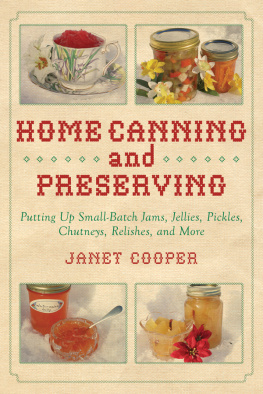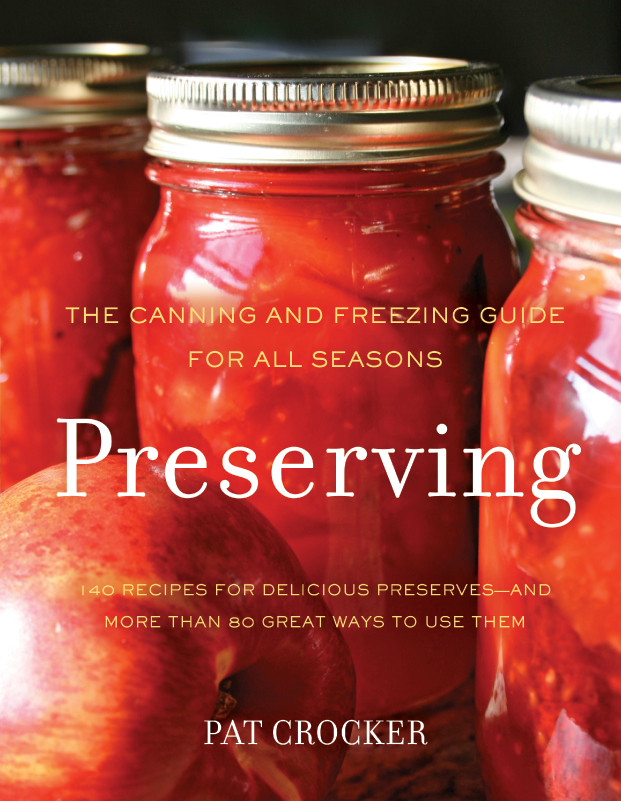Winter is an etching, spring a watercolor,
summer an oil painting and autumn
a mosaic of them all.
STANLEY HOROWITZ
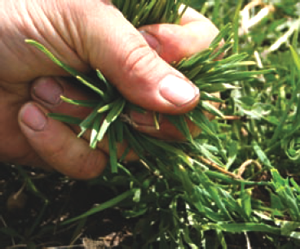
To the true heroes of the food system, the people who grow the produce, nurture the livestock, feed and milk the goats, and make the cheesethe people who carry around the very earth at the tips of their fingers.
Contents
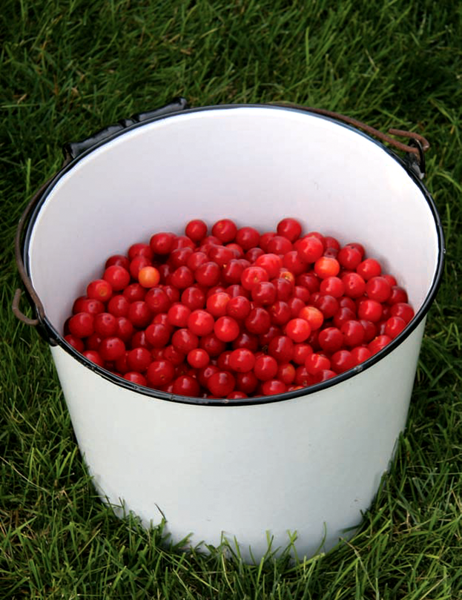
THE EAT LOCAL, BUY SEASONAL food movement is changing the way we think and acttaking us right back to how our forebears thought and acted. If locally raised and produced food is the new organic, then preserving the harvest is the new food technique.
But while we may be returning to some of the old ways, there are a few significant differences between our great-grandparents need to survive and our desire to eat well and be part of a slow food revolution. First, our ancestors in this harsh land tilled the soil themselves, whereas we have access to local produce from a wide array of venues, including community gardens, CSA co-operatives, urban, country and farm markets, greengrocers and supermarkets.
Secondly, the preserving pioneers were content to put beans on the table in January. For us, perhaps that jar of organic green and wax beans we pickled in August will be the star of a winter are reminders that we can take back an important part of the food chain and dine as though we were at a fine restaurant.
Why another book on preserving?
Because along with the why and the how to make the most of local bounty, todays young homemakers, parents, working mothers, single cooks or first-time cooks want to be creative when using those precious jewels that shimmer so brightly on pantry shelves. They want to eat well every day, and they want to use their own preserves rather than contribute to the food factory conglomerates. Preserving is different from almost all other books on preserving because it offers stunningly easy recipes using the exceptional preserves found in these pages.
It is comforting to know that a pantry full of flavourful food sits ready to be used. With the twist of a lid and the recipes in this book, you can serve restaurant-style dishes with home-style quality and economy.
Preserving is a practical book with simple concepts. It follows the seasons and the diverse foods they bring to our market basket and kitchen pantry. And it offers great ideas for what to do with the homemade sauces, chutneys, pickles, jams and jellies. This book is the key to the modern-day preserving puzzle. Our time spent preserving is an enjoyable part of our busy lifea relaxing end in and of itselfbut Preserving also saves us time by providing quick, homemade everyday recipes for using up our homemade bounty.
Why bother with seasonal foods?
Eating seasonallythat is, buying and cooking food at the peak of ripeness grown close to where you liveensures that we pay attention to the natural rhythms of the earth. It forces us out into the countryside or the garden or the weekly market to see, literally, whats upwhat plant has poked a pale green blade of life through the soil toward our grateful plate.
Local, seasonal foods tend to be more economical because there is a glut of the same plant at the same time. They taste better, store longer and may even be healthier because they have not travelled an average 2,400 kilometres to get to your kitchen. Besides being economical, local and seasonal food habits are healthy for individuals, communities and the global environment.
Why all the fuss about local food?
Good farmers know their business. They grow varieties of fruits and vegetables for the right reasonsnutrition and taste and cooking propertiesnot because they fit a mechanical picker or transport well. Their varieties are naturally suited to the soil and weather conditions of their area. They might be preserving heritage varieties; they might even be following organic principles; and they know the food they produce, from seed to table. Moreover, they are certainly in touch with their customers and listen to their concerns. We all benefit when good farmers can stay in business.
Of course, there are other, measurable reasons for buying locally produced food. There are documented facts about the number of kilometres produce travels, its ripeness, the methods employed to keep it edible, barrels of fossil fuels used, wasteful packaging, factory farming, irradiation, genetic engineering, food safety, pesticides, animal welfare and the accumulated effect these factors are having on the health of both the environment and the individuals consuming factory food.
But for me, it is simple: get to know the guy who raises the turnips and you will eat better and probably be healthier.
An apple is an apple, right?
In a word: no. You dont have to know the genealogy of plants to eat well, but you do need to know that every fruit and every vegetable you eat is one of perhaps dozens, hundreds or even thousands of varieties that we have to choose from. For example, some estimates put the number of apple varieties worldwide at a whopping 7,500; there is a unique variety of Greek fava bean that clings to life nowhere else in the world but on the island of Santorini; and Prince Louis Albert de Broglie grows more than 600 kinds of heritage tomatoes at his chteau in the Loire Valley. We definitely need to know that there is more out there than Granny Smith and Delicious.
So why is our choice in apples limited to four or five varieties? Factory farms, distributors and large chain supermarkets are only interested in narrowing the choice to what is easy: easy to grow, harvest, transport, purchase, display and sell. Their concerns run counter to our concerns. By becoming more aware of the plants we might enjoy, we can start asking for a wider variety of plant food and, perhaps more importantly, we will become engaged in the issues surrounding the preservation of diversity along with heritage varieties.
In my view, genetically altered seeds or copyrighted seeds or plants bred to produce sterile seeds are not in our best interestin fact, they only reward the chemical companies that invent them.
There is one more reason to search out local, seasonal varieties: it forces us to experiment with plants and varieties we may not have tasted. The first time I bit into a wedge of green Zebra tomato, I was instantly transported back 40 years to the front porch of my parents home on a sweltering late-September evening. The true tomato essence of that one bite communicated the smell of slightly burnt toast spread with old nippy cheddar cheese (from a foil-lined wooden box, not a plastic tub), the sound of a World Series game on the radio and the aromatic flavour of my fathers purple-red beefsteak, carved into thick slabs and sprinkled with salt and pepper. Up until that moment, I had forgotten the fragrance and taste of real tomatoes and the sound of baseball on a transistor radio.

